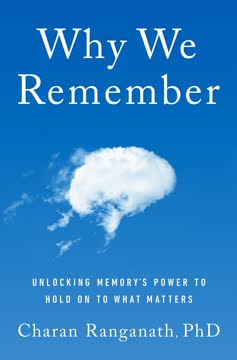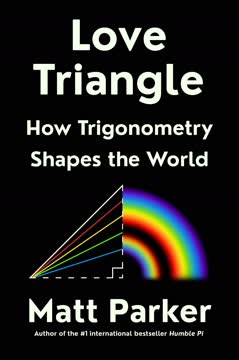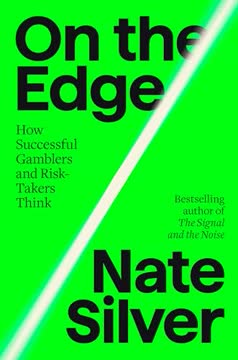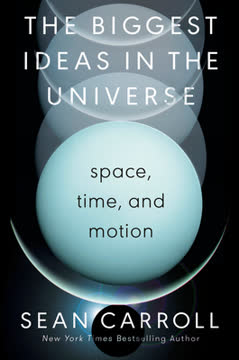Key Takeaways
1. Math is defined by its logical techniques and the process of proof.
Math is a world in which the end does not justify the means: quite the reverse.
Logic is the method. Unlike science, which relies on evidence and experiment, mathematics uses only sheer logical reasoning. This means math studies anything that obeys the rules of logic, using those same rules. The method defines the subject matter.
Proof is the journey. In math, getting the right answer isn't enough; the process of arriving at it, called proof, is paramount. A mathematical proof is a series of logical steps, each following from the last, ensuring the conclusion is irrefutable, not just highly probable. This focus on the journey distinguishes math from fields where only the destination matters.
Why logic matters. Using logic instead of experiments offers advantages: it's practical for large-scale problems (like building a house), safe for dangerous scenarios (like bridge load limits), possible for the impossible (like planetary motion), and avoids undesirable or immoral experiments (like disease spread or animal culling). The conclusion, if the logic is sound, is certain.
2. Abstraction simplifies complexity by ignoring irrelevant details.
Abstraction is the key to understanding what mathematics is.
Finding similarities. Abstraction is the process of looking for similarities between different situations by ignoring small details. This allows us to use one "recipe" or blueprint for many different things, saving effort and making complex ideas easier to understand. It's like seeing the common method in making mayonnaise and hollandaise sauce.
Tidying the brain. This process is like tidying your kitchen before cooking, putting away what you don't need so your brain is less cluttered. Turning a word problem about stamps into a simple equation like 36 + 36 = ? is abstraction; we ignore that they are stamps because it doesn't affect the calculation. It's stepping away from reality slightly to gain clarity and efficiency.
Idealized versions. Abstraction creates idealized versions of things, like perfect geometric shapes or numbers themselves, which don't exist perfectly in the real world. This allows us to reason about them using logic. The power comes from being able to move back and forth between the abstract ideal and the concrete reality, applying logical conclusions back to the real world.
3. Understanding principles and generalization reveals underlying structure.
The point is that if you understand the principle behind a process rather than just memorizing the process, you will be much more in control of the situation, better able to fix it when it goes wrong, in a better position to modify the process for different purposes, and better able to cope in extreme situations such as missing ingredients, broken equipment, drunkenness. . .
Principles reveal 'why'. Understanding the basic principles behind something, like why cakes rise or why certain notes sound harmonious, gives you control and adaptability. In math, understanding principles like transitivity (if A > B and B > C, then A > C) allows you to apply the same logic to different relationships, not just specific numbers. This is the core of mathematical understanding.
Generalization expands scope. Generalization takes a familiar concept and modifies it slightly to apply to more situations. This can involve relaxing conditions (like moving from congruent to similar triangles by dropping the size requirement) or adding dimensions (like generalizing a circle to a sphere). It's like inventing flourless chocolate cake by omitting an ingredient or discovering non-Euclidean geometry by questioning the parallel postulate.
Exploring new worlds. Generalization allows mathematicians to explore new mathematical "planets" where familiar rules might not hold, like number systems where prime factorization isn't unique or "distance" notions where the triangle inequality fails (like train ticket prices). Understanding the core principles helps navigate these new worlds and see what still works.
4. Math is driven by both internal exploration and external problem-solving.
When the two coincide you get a journey that is interesting in its own right, with a destination that is also interesting in its own right—the best of both worlds, and the most beautiful of mathematics.
Internal vs. external. Math is motivated in two ways: internally, by exploring ideas for their intrinsic interest (like studying prime numbers), and externally, by building tools to solve specific problems (like solving quadratic equations). School math often focuses only on external motivation, solving problems set by others.
Following your nose. Internal motivation is like wandering through a new city and discovering hidden gems; external motivation is like following a map directly to a famous landmark. Both approaches are valuable, and the most beautiful math often arises when internal exploration unexpectedly provides the tools to solve external problems, or vice versa.
Inventing concepts. Sometimes, solving a problem requires inventing entirely new concepts, like imaginary numbers, which were needed to solve certain equations. This can feel like "cheating," but if the new concept makes internal sense and solves existing problems, it's a powerful mathematical invention. It's like inventing a machine to solve a problem, rather than solving it manually each time.
5. Axiomatization clarifies assumptions and defines mathematical worlds.
The important thing is that the bricks are considered to be basic—you’re given them in a box.
Basic ingredients. Axiomatization is the process of boiling down a mathematical system to its most basic, unquestioned truths or "axioms." These are the fundamental building blocks, like the basic Lego bricks or the core ingredients you always keep in your kitchen. Everything else in that system must be logically deduced from these axioms.
Defining the rules. Axioms also define the rules for how these basic ingredients can be combined. For example, the axioms for a "group" define how objects can be combined (associativity, identity, inverses), creating a specific mathematical world. This allows mathematicians to study different worlds that obey the same rules, even if the objects themselves are different (like integers under addition and symmetries under composition).
Closing loopholes. Precise axiomatization is crucial because mathematical objects only obey the exact letter of the rules, not the spirit. This prevents unexpected loopholes, like counting 1 as a prime number (which would ruin unique prime factorization) or assuming probabilities are independent when they are not (leading to errors like in the Sally Clark case). Clearly stating axioms prevents ambiguity and allows for rigorous deduction.
6. Category Theory is the mathematics of mathematics, organizing and connecting different fields.
Category theory is the mathematics of mathematics.
Meta-mathematics. Just as math provides a language and framework for understanding the world, category theory provides a language and framework for understanding mathematics itself. It's a level of abstraction higher, like building Lego bricks out of Lego bricks ("Lego Lego"). It studies the structures and processes that are common across different areas of math.
Organizing principle. Category theory emerged in the mid-20th century as mathematics became vast and complex, needing its own system of organization. It helps mathematicians think clearly by providing a unified way to describe and compare structures from seemingly unrelated fields like algebra and topology. It's like creating a universal library catalog for all of mathematics.
Connecting disciplines. By focusing on the underlying structure and relationships, category theory builds "bridges" between different mathematical cities. This allows ideas, tools, and techniques developed in one area to be applied fruitfully in another, leading to new insights and discoveries across the mathematical landscape.
7. Context is crucial in math, defining the nature and relationships of objects.
Category theory emphasizes the context in which we’re thinking about things, rather than just the things themselves.
Meaning depends on context. The nature and properties of a mathematical object are not absolute but depend heavily on the context or mathematical world it inhabits. For example, the number 5 behaves differently in the context of natural numbers (it's prime, no inverse) compared to rational numbers (not prime, has a multiplicative inverse) or modular arithmetic (can be a generator).
Relationships define context. Category theory places objects within contexts by emphasizing their relationships with other objects, rather than just their intrinsic characteristics. This is like understanding a person by their family, friends, and roles, rather than trying to describe them in isolation. Diagrams showing relationships, like the lattice of factors of 30, help visualize this context.
Different contexts, different insights. Studying the same object in different mathematical contexts reveals different aspects of its nature, just as seeing a person interact with different groups of friends reveals different facets of their personality. Category theory encourages exploring these varied perspectives to gain a deeper understanding.
8. Category Theory studies relationships (morphisms) and reveals structure through diagrams.
One important aspect of category theory is that it examines what part of a mathematical idea is structural, more like a baked Alaska than a dinosaur cake.
Relationships as arrows. Category theory represents relationships between objects as "arrows" or "morphisms," emphasizing directionality (like one-way streets) and allowing for multiple relationships between the same two objects. These arrows can represent various connections, from inequalities between numbers to functions between sets or ways of morphing shapes.
Composition of relationships. Arrows can be composed, meaning doing one relationship followed by another results in a new relationship, like taking two train routes sequentially to get from A to C. This composition must follow rules, including associativity (like combining three routes). Diagrams of objects and arrows visualize these relationships and their compositions.
Diagrams reveal structure. Drawing these diagrams, often called "commuting diagrams," turns abstract algebraic relationships into geometric shapes. This allows mathematicians to use visual intuition to understand complex structures, like the pentagon arising from different ways of combining five elements. These diagrams highlight the essential structural features, much like the hidden support structure of St. Paul's dome.
9. Math uses precise notions of sameness beyond simple equality, often based on reversibility.
One of the key aims of category theory is to take slightly subtle notions of sameness and make them precise.
Equality is too strict. In math, true equality means being exactly the same in every way, which is rarely useful. Math needs more flexible notions of "sameness" that capture equivalence from a specific point of view, like similar triangles (same shape, different size) or topologically equivalent shapes (same number of holes).
Reversible processes. Category theory formalizes these notions of sameness using relationships (morphisms). Two objects are considered "the same" in a given category if there is a relationship from one to the other that is "invertible," meaning it can be reversed to get back to the original object. This is like melting and refreezing water, a truly reversible process, unlike freezing an egg yolk.
Beyond simple equivalence. While some notions of sameness are like equivalence relations (reflexive, symmetric, transitive), category theory handles more general relationships where symmetry might not hold or where multiple distinct relationships exist between objects. It provides a framework to precisely define what "more or less the same" means in various mathematical contexts.
10. Universal properties characterize objects by their unique roles relative to others.
Category theory seeks to characterize objects by roles they fill in relation to everything else.
Defining by role. Instead of describing an object by its intrinsic features, universal properties define it by the unique role it plays in relation to all other objects in a category. This is like identifying Cinderella by the unique fit of her slipper or recognizing 0 and 1 by their unique additive and multiplicative roles.
Superlative objects. Universal properties often identify "extreme" objects, like the smallest possible set (the empty set) or the smallest possible group (the one with only an identity element). These "initial" (unique arrow from them to all others) or "terminal" (unique arrow to them from all others) objects provide crucial insights into the structure of the entire category.
Minimal and 'free' objects. Universal properties also capture the idea of objects that arise "freely" or minimally from basic components, like the natural numbers being the "free monoid" generated by 1. These objects embody a structure with no extra, arbitrary rules imposed, representing a fundamental way of building within a mathematical context.
Last updated:
Review Summary
How to Bake Pi received mixed reviews, with praise for its accessible approach to explaining mathematics through cooking analogies. Many found it engaging and insightful, particularly in describing abstract concepts and category theory. Readers appreciated Cheng's enthusiasm and ability to make math relatable. However, some felt the book lacked focus or depth in certain areas. The cooking metaphors were generally well-received, though a few found them gimmicky. Overall, reviewers commended the book for its fresh perspective on mathematics and its potential to change perceptions about the subject.
Similar Books









Download PDF
Download EPUB
.epub digital book format is ideal for reading ebooks on phones, tablets, and e-readers.







